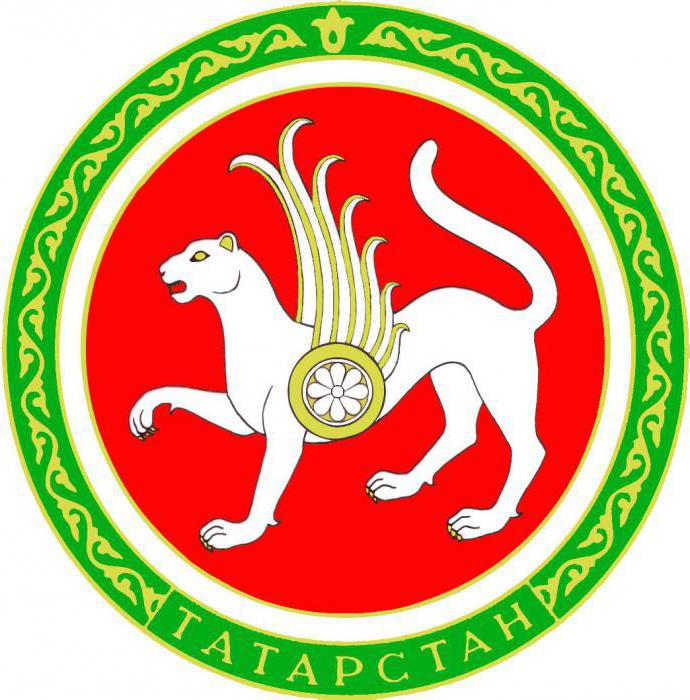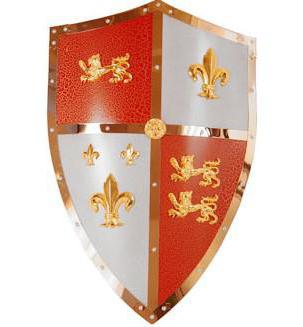One of the indispensable attributes of any state, along with the flag and anthem is the coat of arms. What is a short word, borrowed from the Polish language, meant in the old days, few know. That is why you will probably be interested to know the history of such images. The interpretation of some symbols decorating one or another well-known emblem is also curious.
What?
In Polish, a coat of arms sounds like a herb. This expression is a distorted version of the German word, which translates as "emblem". They initially designated the distinctive sign, which was inherited. The emblem depicted objects symbolizing its owner (person, clan, estate, city or country).
History
Heraldry, a science that originated in the Middle Ages, is engaged in the study of the origin of this or that coat of arms. This is a serious historical discipline that accurately determines which symbols can be applied to the state or family coat of arms, and so on, and also explains the significance of certain figures.
Many will probably be surprised to learn about the coat of arms that such an image on the shield, weapons and clothes began to be worn by knights because of the need to fight in a helmet with a visor. He made it difficult to discern a person and recognize him as an enemy or ally, so something was required that could identify a warrior. This was especially important during the Crusades, when the army of knights who arrived from Europe consisted of representatives of different countries.
Since most often symbols indicating the country and affiliation of a particular aristocratic surname were painted with shields, many coats of arms still have a similar shape.
The first image of this kind dates from the 1127th (possibly 1128th) year. This is a shield with 6 golden lions on a azure field. It is assumed that he was received by Geoffrey Fifth of Anjou as a wedding gift from the King of England, Henry the First.
Items
Symbols of the coat of arms in ancient times could tell a lot about its owner and served as a kind of passport of its owner. They could be very different, while the basic elements usually remained unchanged. The following terminology is adopted for their designation:
- helmet - an element of the coat of arms located above the shield;
- heraldic shield - the basis on which the main symbols and figures are depicted;
- designate, that is, a helmet cover torn into rags, usually having the upper side of the same color as the main enamel of the coat of arms;
- crest - a figure over a helmet;
- crown - an image located above the shield and indicating the feudal status of the owner;
- shield holders - human, mythical (Capricorn, vulture, dragon, etc.) or animal figures located on the sides of the shield;
- mantle;
- motto.
Tamga
Coats of arms is a European invention. However, generic identifying images were also used by the Alans and Turkic peoples. They were in the form of symbols and were called tamga. Among the most famous emblems of this kind can be called the patrimonial signs of Tamerlane and the Crimean Herai. They are radically different from European ones, more concise and usually represent a combination of simple geometric shapes.
Russian coat of arms
This most important symbol of our statehood is a quadrangular red heraldic shield. It depicts a golden double-headed eagle, spreading its spread wings up. It is crowned with 2 small crowns. Above them is another - large. In the right paw of the bird is a scepter, and in the left eagle holds a power. On his chest in a red shield depicts a silver rider on the same horse. He is wearing a blue cloak, and he strikes with a spear a black dragon trampled by a horse.
It just so happened that the flag, coat of arms, anthem of our country were created in different centuries. And this is very symbolic, since it means the continuity of different eras of Russian statehood.
Coats of arms of some republics of the Russian Federation
Russia is a federal state. It consists of 21 republics. All of them have coats of arms.

- One of the largest constituent entities of the Russian Federation is Tatarstan. The emblem of the republic is round in shape, it depicts a winged leopard, which in ancient times was the patron saint of children and the fertility deity of the Volga Bulgars. The background is a red sun, symbolizing happiness and life. On the side of the leopard is an aster depicting longevity.
- It is worth telling about the coat of arms of Bashkortostan. It also has a round shape. It depicts an equestrian monument to Salavat Yulaev against the backdrop of the rising sun, and below is the kurai inflorescence, considered a symbol of the courage of peoples.
- The coat of arms of Kalmykia depicts 4 bonded circles, which symbolizes the tribal union of the ancestors of the Kalmyks. A red brush is visible on it. It is called Ulan Hall, and in the 15th century, the governor of Togon Taisha ordered all Kalmyks to wear it on a headdress. In addition, there is a white scarf on the coat of arms. He is an offering of believers in the temple as a sign of peaceful intentions, kindness, generosity and abundance.
- The coat of arms of Dagestan is a white round heraldic shield. At its center is a golden eagle. Above the bird is an image of the sun, bordered with ornaments. At the base of the heraldic shield, white-gold snowy mountain peaks, the sea and the plain are drawn. Shaking hands is even lower, and on both sides is a heraldic ribbon that says “Republic of Dagestan”.
- The image of the coat of arms of Kabardino-Balkaria has the shape of a traditional scarlet shield. It depicts a golden eagle with a blue eye. A crossed shield is located on the chest of the bird. Above is an image of a silver mountain with two peaks in a azure field, and below is a golden trefoil on a green field.
- The coat of arms of the Altai Republic is a circle that is bordered by a narrow golden stripe. On a blue-blue background depicts the three-headed peak of Belukha Mountain. Below (in the center of the circle) is a white griffin with the head of a bird on the body of a lion. At the bottom of the coat of arms are the Biya and Katun rivers with tributaries. Between them is a golden tripod.

Now you know the terminology with which you can describe the emblem. What is heraldry and why did the knights paint their shields, you also know, and you can amaze your acquaintances with your knowledge and support small talk.